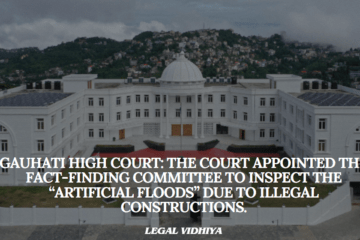
Keywords: supreme court, void, voidable, mitakshara system, hindu marriage act, hindu succession act, inheritance
In a landmark judgment, the Supreme Court of India has ruled that children born out of void or voidable marriages have the right to claim a share in their parents’ ancestral property in joint Hindu families adhering to the Mitakshara system of law. This significant decision provides clarity on a complex legal issue that has been the subject of debate and conflicting interpretations for years. A Bench comprising Chief Justice of India DY Chandrachud, along with Justices JB Pardiwala and Manoj Misra, delivered this groundbreaking verdict in the case of Revanasiddappa and Anr v. Mallikarjun and Ors.1
The essence of the ruling lies in the interpretation of Sections 16(1) and 16(2) of the Hindu Marriage Act (HMA) in conjunction with the Hindu Succession Act (HSA). The Supreme Court affirmed that a child born from a void or voidable marriage is considered a legitimate kin under the HSA, granting them rights in their parents’ ancestral property.
Crucially, Section 6 of the HSA, which pertains to interest in coparcenary property, was analyzed in the judgment. It was underscored that this section effectively treats coparcenary property as if it had undergone partition. Consequently, the Court harmonized the provisions of the HSA and HMA to ensure that children under Section 16(1) and (2) of the HMA possess rightful claims to their parents’ property. However, the Court clarified that the rights of children from void or voidable marriages are limited solely to their parents’ property and do not extend to property owned by other family members. The ruling firmly asserted that such children do not automatically (ispo facto) become coparceners in the Hindu Mitakshara Joint Family.
The judgment’s implications are far-reaching. It fundamentally alters the concept of property devolution in Hindu Undivided Families (HUF) governed by Mitakshara law. Previously, property shares would devolve through survivorship, but now, it is by testamentary or intestate succession under Section 6(3) of the Hindu Marriage Act. This decision settles a
long-standing legal dispute that originated from conflicting opinions within the Supreme Court. The question revolved around whether children born from void marriages could claim a share in ancestral coparcenary property or were limited to their parents’ self-acquired property, as per Section 16(3) of the Hindu Marriage Act.
The Supreme Court’s 2010 ruling in Bharatha Matha and anr v. R Vijaya Renganathan & Ors had upheld the latter interpretation, denying inheritance rights in ancestral property to such children. However, in 2011, the apex court in an earlier round of the present appeal held the opposite view, arguing that these children have rights in both self-acquired and ancestral property. This discrepancy led to the matter being referred to a larger bench for clarification.
On 1st September,2023, the Supreme Court resolved this ambiguity, affirming that children born from void or voidable marriages have legitimate claims to their parents’ ancestral property. The decision reflects the changing social norms and evolving legal principles. This ruling will undoubtedly have significant implications for family law in India, providing clarity and equitable treatment for children born out of void or voidable marriages in matters of ancestral property inheritance.
Senior Advocates Kiran Suri, AIS Cheema, V Mohana, and Vivek Chib, along with a team of advocates, played pivotal roles in presenting arguments for the various parties involved in this landmark case. This decision not only has legal ramifications but also underscores the judiciary’s commitment to evolving with the changing dynamics of Indian society, ensuring that the principles of justice remain aligned with contemporary values.
Written by: Tanvi Bansal , College name: UILS, PU , Semester: 3rd , As intern under Legal Vidhiya
1 BAR AND BENCH, https://www.barandbench.com/news/child-void-marriage-parents-ancestral-property hindu-joint-family-supreme-court (last visited on 2nd September, 2023).




0 Comments